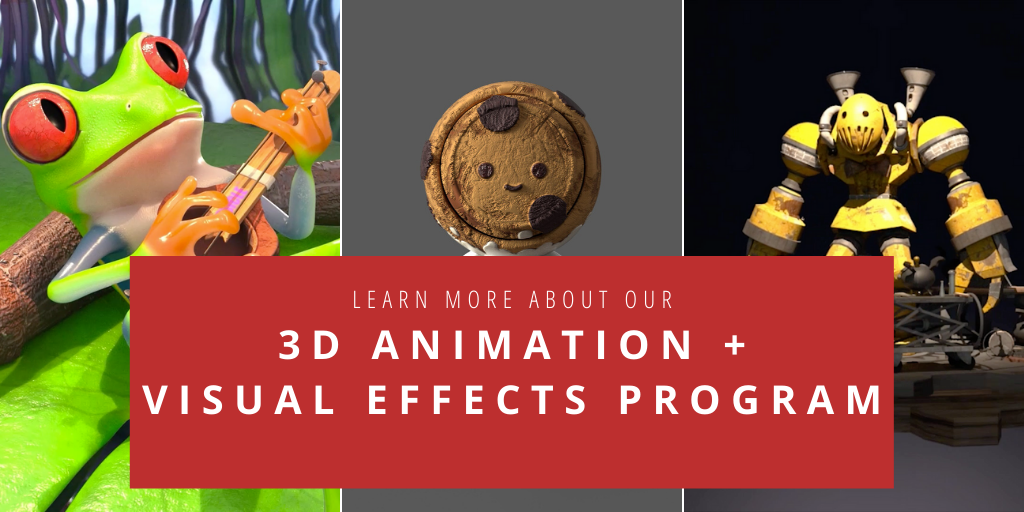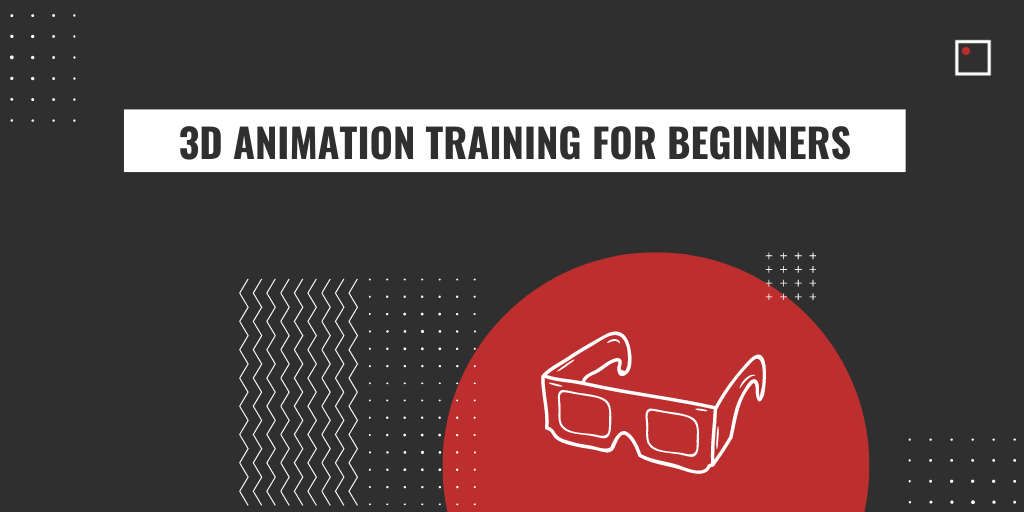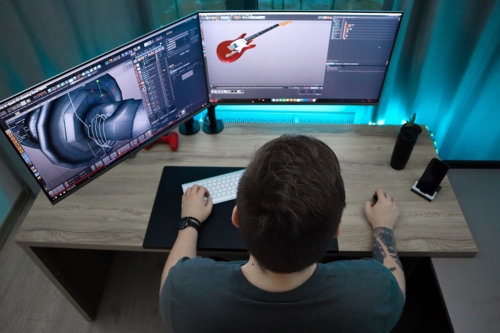3D ANIMATION TRAINING FOR BEGINNERS
Considering 3D Animation training? Look no further – we have six steps to help you make your way in the 3D animation industry!
By: Sophia Lin
The 3D animation industry is booming with the rise of visual effects, the popularity of video games, and advancements like interactive and virtual reality 3D. These developments are all to thank for its recent and projected growth. Across the board, there’s no doubt that 3D animation is the future. But if, like many, you’re looking to get into this lucrative industry, there’s likely one key question you have. How do you start?
Well, that’s what we’re here to tackle. 3D animation is a complex, multi-faceted industry, but getting a start in it doesn’t have to be. In fact, it can be a smooth, clear path to employment
So, if you’re hunting for an all-around guide to breaking in and getting the 3D animation training you need, look no further. We’ve broken it all down into 6 compact steps, so you can take that first leap with no hesitation.

Click here to learn more about InFocus Film School’s 3D Animation and Visual Effects Program
1. Getting Acquainted with the Industry
The first step is to get familiarized with the industry itself. Knowing about its present outlook and its future advancements is very important. This encompasses a thorough knowledge of 3D animation, such as its applications in animated feature films, video games, and live-action films. Not to mention, it’s worthwhile to get a feel for the general daily tasks of a 3D animator. This involves substantial initial research, blocking out poses, and refining character movements.
Beyond that, you should aim for a cursory understanding of the animating process. It’s quite a technically rigorous procedure, with many steps requiring various types of 3D animation training. Many specialists are involved — first to model the character, then rig it with bones, skin weights, and constraints, and finally animate it.
2. Know the Job Market
The second course of action is to gain an understanding of the current job market and what’s in store. For instance, 3D animation jobs are, at the moment, more abundant than ever. This sector is predicted to continue a promising upward trend in the decades to come. It’s key to understand the underlying drivers as well. In this case, the aforementioned considerations like video games and VFX contribute, with digital streaming acting as a foremost factor.
Equally crucial is building a knowledge of the expanding uses of 3D animation. Today, 3D animation is used in many Hollywood films and live-action movies. When it comes to live-action films, the work of a 3D animator can appear in many forms. 3D animators can create something as small animated animal and others the size of buildings — think Godzilla.
3. Get A Hold of Software
To begin any sort of 3D animation training, having software is a must. Thankfully, an assortment of possibilities is out there, for a variety of aims and interests. The industry-standard software is Autodesk Maya, commonly just called Maya. It features a powerful toolset and top-of-the-line animation tools. For those aiming to do animation professionally, this is the best choice. It is excellent for anything from motion graphics to environments to character creation.
In terms of the costs, Maya has a monthly fee, but students can access it for free. Another well-known and versatile software is Blender, a free, open-source program that features its fair share of functionalities as well. Yet another option is Autodesk 3ds Max, which is designed for creating professional 3D animations and design visualizations. Like Maya, the software requires a paid subscription, however, it is also free for students.
4. Take Relevant 3D Animation Training Courses
Like any fast-paced industry, effective learning and up-to-date knowledge are fundamental components of a successful career. Perhaps unsurprisingly, most of the successful, working 3D animators today are funnelled in from some type of relevant course, most typically through film school connections.
Some courses specializing in 3D animation can be taken online or purchased via various platforms — they are often taken on your own time, with no live professors. Another option is a formal 3D animation training program at a film school. These courses provide you with an array of animation resources, as well as mentorship and networking opportunities. For a highly technical field like animation, working with industry-experienced professionals gives aspiring 3D animators a leg up. Not only do they have a wide array of connections, but also a mastery of current industry standards in 3D animation. Because many of them work while being instructors, they have a wide breath of knowledge in the industry. And don’t be daunted by the commitment — some schools have one-year programs, designed for students to enter the industry right away.
5. Understand Different 3D Animation Roles
Part of what makes the world of animation so diverse and multi-disciplinary is the substantial assortment of positions that 3D animators can take on. As someone looking to find their place in the industry, it’s essential to get a grasp of what’s out there before you dive in. Starting with more entry-level jobs, there are junior concept artists, who experiment with ideas and create the first sketches of a project. A more popular one is a junior animator. They brainstorm ideas, research a character’s motion, and refine the quality of overall animations.
Moving up in the ranks, you have jobs like character animators and props animators. These are the people who develop characters and render props assets, respectively. Other top jobs consist of character riggers, 3D modellers, effects animators, render wrangler, and the list goes on and on. These positions, however, require higher levels of 3D animation training, coupled with reliable experience in the specific field.
6. Build A Network
When you are first getting started, it is important to make contacts in the industry. This can happen anywhere and anytime, so long as you reach out, stay proactive, and keep in touch. To begin, this can look like hopping on relevant online groups and forums. You could also join learning groups, or try tutorials. One route that works for both your network and your craft is sharing your work online and asking for feedback. You will not only grow and learn, but you will make yourself known to your fellow animators.
It may not be duly evident, but the people you offer some help to or strike up a conversation with will be the collaborators, supporters, and mentors helping you down the line. As a beginner, those in your local animation scene will be glad to guide you, having been in the very same place themselves. So, go to events, screenings, and festivals, ask all your questions, and put yourself out there!
Related Articles:
5 Tips on How to Get Hired at a 3d Animation Studio
Top 10 Entry Level 3D Animation Jobs
Top 10 3d Animation and VFX Studios in Vancouver










